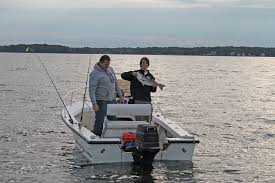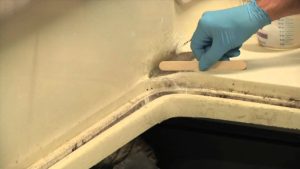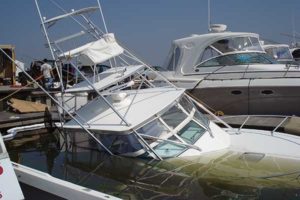Boating is one of life’s most simple indulgences. The rocking of the boat, the sun on your face, and hopefully a fish on your hook means unending joy. All that is required is a simple vessel that can float on water. However, boats have issues that can make the day a lot less enjoyable. Boats have many parts and each of them can go wrong. Ask any boater and they can tell you that there is nothing worse than being out in the water with a problem on board. Most will admit that making repairs on a marine cruiser is not always easy.
For the Love of Boating Joys
What do you do when you are two miles from the nearest dock and your boat motor decides that it is finished for the day? How much would it spook you to be in the middle of your favorite lake with a pump that doesn’t pump or a steering wheel that doesn’t steer?
 Your boat is made up of many different parts. Each one serves the purpose of helping you to enjoy the day to the fullest. If any single part of it fails, you could be stuck calling for help or paddling your way to the nearest landmass. Neither option is much fun. Therefore, it is important that you work to maintain your boat. Problems are going to happen. You will save yourself time and headaches if you can see the problems before they arrive.
Your boat is made up of many different parts. Each one serves the purpose of helping you to enjoy the day to the fullest. If any single part of it fails, you could be stuck calling for help or paddling your way to the nearest landmass. Neither option is much fun. Therefore, it is important that you work to maintain your boat. Problems are going to happen. You will save yourself time and headaches if you can see the problems before they arrive.
Common Problems and Repairs
 Most often, boating issues will stem from a motor that doesn’t want to go. There is no easy way to fix this on the big water, so you are better off to make sure it is tuned and running properly before you set out for the deep blue beyond.
Most often, boating issues will stem from a motor that doesn’t want to go. There is no easy way to fix this on the big water, so you are better off to make sure it is tuned and running properly before you set out for the deep blue beyond.
Another common issue with boats is their susceptibility to rotting and water damages. A leaky hull or the deck should never go unrepaired. If you are not familiar with repairing your boat, you will need to get someone who knows what they are doing to help you out. It may mean applying new wood or repairing the fiberglass, depending on how severe the damages are. Unless you have a large crack or ding, most people can make the repairs themselves by sanding it down, patching it up, and applying fibreglass resin pigment to get the perfect color. Larger areas of damages may mean more effort and should be tackled by someone who understands a boat’s needs.
Know the Risk and Plan Accordingly
 On the water, anything can, and usually will happen. If you are on an older boat, test it out close to the shoreline before you venture out to make sure that everything is working as it should. Especially if it is the first time out this season. You may also want to have it out of the water so you can do a visual check on all of its many, movable parts. Make sure the wiring isn’t corroded, your battery charge is good, there are no visible dock dings, and more. This will ensure that you are prepared for whatever the day brings you.
On the water, anything can, and usually will happen. If you are on an older boat, test it out close to the shoreline before you venture out to make sure that everything is working as it should. Especially if it is the first time out this season. You may also want to have it out of the water so you can do a visual check on all of its many, movable parts. Make sure the wiring isn’t corroded, your battery charge is good, there are no visible dock dings, and more. This will ensure that you are prepared for whatever the day brings you.